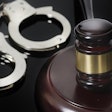
Whenever my daughter jumps into a pool, she always plugs her nose. Why? Because according to her, everyone who jumps into a pool gets water up their nose. It's happened to her many times, after all. So it must happen to everyone, every time.
 Curtis Marshall.
Curtis Marshall.Sure, jumping into a pool can make water go up your nose. But it doesn't happen to me, and it probably doesn't happen to you. There are two possibilities: Either my daughter's nose is uniquely susceptible to water invasion, or she's missing something and is assuming nose water is an unpreventable, universal phenomenon.
My money's on the second option. But why am I bringing this up? Because something similar is happening in dentistry right now.
Let's change the scenario a little bit. Tell me if this sounds familiar: Whenever September rolls around, your practice braces for a significant slump in the numbers. Why? Because it happens every September. It's happened many times, after all. So it must happen to every practice, every September.
Sure, September can come with a significant hit to your bottom line. But it doesn't happen to many high-performing practices, and it doesn't have to happen to you.
There are two possibilities: One, your practice is uniquely susceptible to the September slump, or, two, something's missing, and you're assuming "Sucktember" is an unpreventable, universal phenomenon.
My money's on the second option.
I recently spoke with a practice that had the same idea about May. They thought May was a guaranteed bad month for production, so instead of tackling it, they would cut their perceived losses and take time off in May.
Regardless of whether your practice is facing a decline in September or May, there's one key takeaway: If you believe it's guaranteed to happen, it will happen. But when we look at the data, this doesn't happen to the top 10% of dental offices.
3 statistics show why September sucks
In most of the dental offices that routinely experience Sucktember, there are three factors that lead to a decline in production. If you want to make a change and prevent the next bad month, you must focus on the metrics that matter. Here's what our data have revealed to us.
1. Exams and diagnoses decrease during the summer
I have noticed that in July and August, there is a decrease in exams completed. Although the causes of this decrease are different from office to office, it could be attributed to the fact that offices or patients may be on vacation during the summer months.
Meanwhile, the patient diagnostic percentage, or the number of patients with treatment diagnosed, shouldn't drastically change. But it does. Whether an office sees 10 or 100 people, the percentage of patients diagnosed should be the same. What may be happening is that providers are in vacation mode and aren't doing as thorough of a job in diagnosing.
Also, the average treatment presented declines during the summer. Of the fewer number of patients who are getting diagnosed, the total presented dollars is also less, and of the offices experiencing this issue during the summer, their treatment dollars presented is down 25% or more.
Altogether, this decrease in exams and diagnoses doesn't set September up to be a great month.
2. Fewer visits are scheduled and completed in September
Another factor I have seen that affects September's success is the number of visits completed during the month. This may be connected to the fact that people are beginning to go back to school, so patients are rescheduling to October and November.
I've also found that in practices experiencing a Sucktember, the hygiene reappointment is typically down 12% or more in March, which leads to fewer visits that should be scheduled six months later -- in September. This could lead to a dangerous cycle, because if September is bad, then March will probably be a bad month as well.
3. Same-day treatment acceptance declines
During September, the patient diagnostic percentage tends to increase sometimes by more than 30%. At first glance, this seems great, but in reality, I've noticed that offices are panicking due to the perception that production will slump during September.
This leads practices to overcompensate and overwhelm their patients when diagnosing them with treatment. In the end, patients delay treatment or decline it altogether. As a result, same-day acceptance declines, because the treatment dollars presented increases.
Overcoming the September slump
To overcome and avoid experiencing a Sucktember, you will want to look into the following three areas and see where your practice can improve:
- Does your practice need to focus on increasing visits?
- Do you need to focus on time spent in the chair diagnosing patients?
- How do you present treatment in a way so as not to overwhelm your patients and increase same-day acceptance?
Focusing on these key metrics will help you and your practice avoid a potentially detrimental month and make it successful.
Curtis Marshall is the director of partner operations for Dental Intelligence.
The comments and observations expressed herein do not necessarily reflect the opinions of DrBicuspid.com, nor should they be construed as an endorsement or admonishment of any particular idea, vendor, or organization.



















